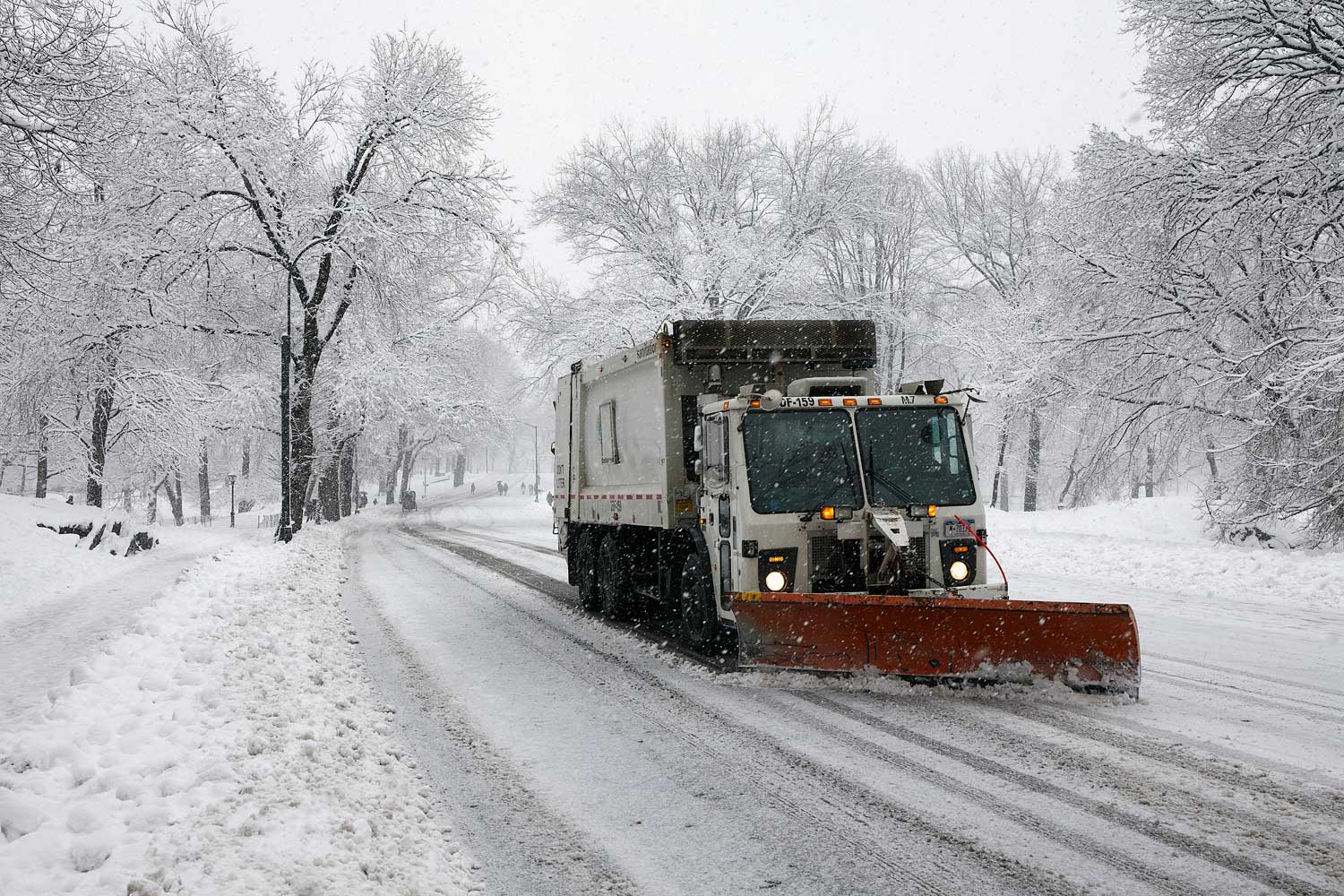How and Why Cities Use Salt to Make Roads Safer for Winter Driving
Salt is both costly and corrosive. It’s also highly effective at keeping roadways free from ice.
 Getty Images
Getty Images
For motorists in much of the U.S., winter means driving in snow and ice—and an increased risk of collisions. The U.S. Department of Transportation reports that 24% of weather-related crashes happen on snowy, slushy, or icy pavement. Those collisions kill more than 1,300 people and injure almost 117,000 per year.
Bleak as they are, those figures would likely be even higher if not for one simple thing: salt. Each year, road maintenance departments across the country drop about 24 million tons of salt (48 billion lbs) to keep roads from icing over. While effective at that task, salting can cause significant problems for automobiles, infrastructure, and the environment.
But let’s first consider the benefits.
What Salt Does
Rock salt—the salt used on roads—is made primarily of sodium chloride, the same chemical we use as table salt. Rock salt doesn’t technically melt ice; it simply helps prevent it from forming. This distinction dictates how and when it’s typically applied.
When salt mixes with water, the chemical reaction blocks water molecules from joining to form ice. The addition of salt lowers the water’s freezing point from 32 degrees Fahrenheit to about 15 degrees, impeding ice formation.
That’s why you’ll usually see trucks salting roads before a snowstorm starts, and before the road surface temperature falls below 32 degrees. The salt can then mix with the water formed when the first flakes melt on the surface, coating the road with a salty solution.
Salting Roads Is Expensive—and Destructive
Salting roads costs state and local governments more than $2 billion a year, according to prior studies. Spreading a solution of water and 23% salt instead can reduce the cost from about $14 per mile, per lane, to $6. This method, called “brining,” leaves strips of white residue on roads before the snow starts and keeps more of the chemical content in place as traffic passes. Using this method, crews can treat roads a day or more ahead of a storm.
Though vital for winter driving safety, salting can damage both vehicles and infrastructure. The Environmental Protection Agency (EPA) estimates the annual cost of that damage at $5 billion nationwide. Some studies put the figure much higher. And while highly effective rust-preventive measures adopted by carmakers more than four decades ago have greatly reduced salt-related corrosion, some carmakers had to issue recalls in recent years for vehicles damaged by salt.
Whether you drive in areas treated with rock salt or brine, AAA recommends springing for the undercarriage spray option at an automatic car wash after a snowfall to help prevent damage to brake lines, fuel and exhaust systems, and your suspension.
Environmental Consequences
Salt’s potential negative impacts don’t stop when the snow and ice disappear. The remaining sodium and chloride wash into nearby soil and waterways and can seep into and degrade roads and bridges. Numerous studies have raised alarm about the increasing salinity of soil, streams, lakes, and drinking water sources.
If salt is so damaging, you might wonder why road authorities don’t simply rely more heavily on sand. While sand can improve traction on slick roads, it doesn’t prevent ice formation. And it’s not entirely benign. Dried sand blown from roadways increases what’s known as PM10 particulate matter (particles smaller than 10 microns), which can be unhealthy for those with respiratory conditions.
Some local and state authorities are studying alternative road treatments. Adding sugar beet juice to brine, for instance, can improve its effectiveness while reducing its corrosive effects. But these alternative methods aren’t being used widely yet.
When the storm clouds gather this winter, you can still expect to see those fleets of salt- and brine-spreading trucks out there doing their thing.
Written by humans.
Edited by humans.
 Jim Koscs
Jim KoscsJim Koscs has been writing about cars for more than 30 years, his byline appearing in national enthusiast and trade publications, newspapers, and websites. He covers a broad spectrum of topics in automotive business, culture, collecting, design, history, racing, and technology. The "car thing" goes way back for Jim. At the 1968 New York Auto Show, he snuck away from his father to get a better look at a Rolls-Royce... from underneath it, to see if it had dual exhausts. (It didn't.)
Related articles
View more related articles